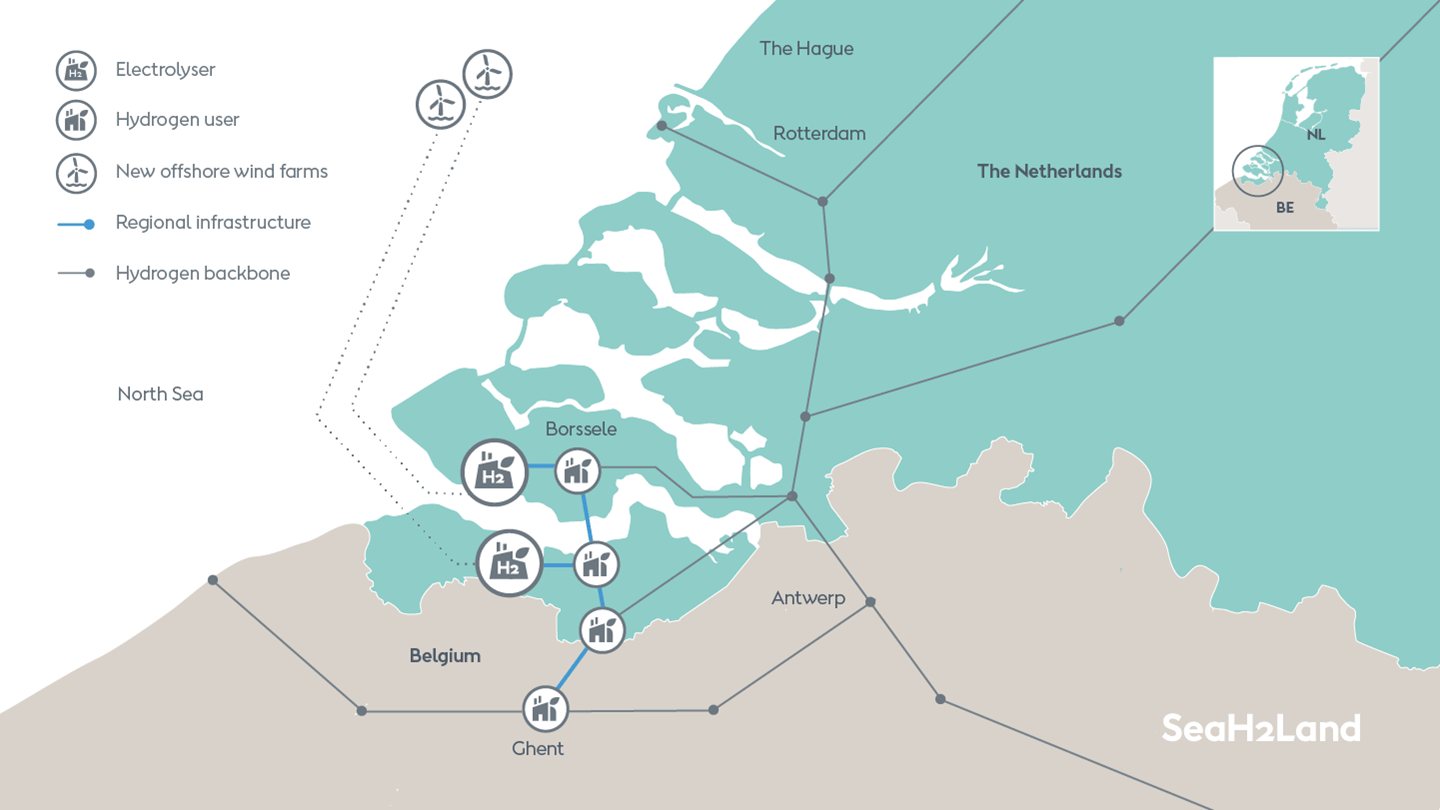What is SeaH2Land?
- A 1 GW electrolyser to produce renewable hydrogen;
- 2 GW of new offshore wind capacity linked to the electrolyser;
- 45 kilometres of regional hydrogen pipelines between the Netherlands and Belgium to exchange hydrogen between industrial players in the region;
- A vision for gigawatt-scale electrolysis and offshore wind landing points on both sides of the river Scheldt after extension of the 380kV grid, turning the cluster into a true hydrogen hub.
Who is involved?
- The electrolyser and the offshore wind farm will be developed by Ørsted;
- SeaH2Land is supported by key regional industrial players: Yara, ArcelorMittal, Dow and Zeeland Refinery;
- North Sea Port and industrial players will work with Smart Delta Resources (SDR), to develop the regional hydrogen network and the 380 kV connection to south of the Western Scheldt;
- The project is supported by the Provinces of Zeeland (NL) and Oost-Vlaanderen (BE).

How and when will the electrolyser be built?
- Phase 1: the first 500 MW can be developed as soon as the required regulatory framework is in place and once development of the envisaged regional hydrogen network allows for it;
Phase 2: the additional 500 MW can be developed when the project will be linked to an (inter)national hydrogen backbone. This is expected before 2030.
Why is SeaH2Land important?
- 580.000 tonnes equal the current fossil hydrogen consumption in the North Sea Port cluster - one of the largest consumption centres in Europe. SeaH2land can replace about 20% by renewable hydrogen;
- This would lead to a substantial carbon emission reduction which helps both the Netherlands and Belgium to reach their 2030 climate targets.
- Furthermore, the cluster has the potential to grow to a consumption of 1.000.000 tonnes of hydrogen by 2050, equivalent to 10 GW of electrolyser capacity for renewable hydrogen;
- As a result SeaH2Land and the envisioned renewable hydrogen cluster - linked to an international hydrogen network - can make an important contribution to the long-term net zero emission target by 2050.